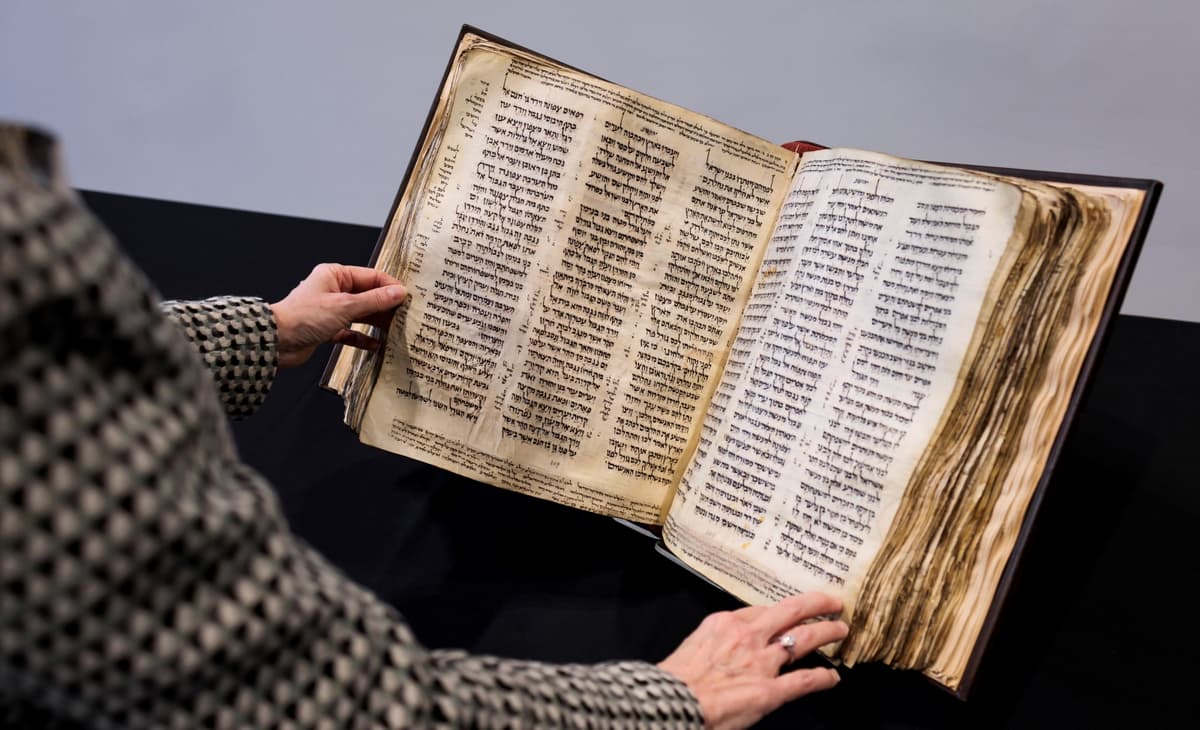Once traded for knowledge, today’s books have turned into objects of preservation; a preservation of heritage, history, people, lives, stories, of a world gone by, or simply of a time when paperbacks and hardcovers were the only options to choose from when you wanted to lose yourself in a story.
As Jhumpa Lahiri famously said, “That’s the thing about books. They let you travel without moving your feet.” From first editions to the familiar smell of freshly printed books, people will go to extreme lengths to grasp onto the tradition of reading and growing. While some hold on to their grandparents’ Sidney Sheldons or Jeffrey Archers, there are others who’re going the extra mile to preserve some of the most expensive books ever sold that conceal everything from foundational texts of the Latter-Day Saint movement to the Magna Carta.
10 of the Most Expensive Books in the World
Each book holds a story of its own, from the hands that penned its words to the journey it undertook through time. This guide uncovers the tales behind the most expensive books ever sold.
1. Codex Leicester – $30.80 million in 1994 (inflation adj. $63.3 million)
The Codex Leicester, a 72-page manuscript by Leonardo da Vinci, was bought by Bill Gates for $30.8 million in 1994 (equivalent to $63.3 million today). Created between his stays in Milan and Florence, the codex features over 300 illustrations and backwards-written diary entries detailing da Vinci's scientific observations and theories on subjects like astronomy, water movement, fossils, and lunar luminosity. Originally acquired by Thomas Coke, the 1st Earl of Leicester, in 1717, it was later owned by Armand Hammer, who briefly renamed it Codex Hammer. This valuable notebook features exceptional illustrations by Da Vinci, showcasing the link between science and art, and provides profound insight into the mind of the Renaissance master.
2. Book of Mormon – $35 million in 2017 (inflation adj. $43.5 million)
The Book of Mormon, the foundational text of the Latter-Day Saint (LDS) movement, holds the record as the most expensive antique book ever sold. In 2017, its original printer's draft, handwritten by Joseph Smith's scribes, sold for $35 million. This manuscript, dictated by Smith from golden tablets he claimed to have found in the 1820s, was used by printer E.B. Grandin to publish the first edition. The Book of Mormon discusses various doctrinal topics and includes a pivotal account of Jesus Christ's post-resurrection appearance in the Americas, fulfilling biblical prophecies and marking a restoration of the Christian gospel.
3. Codex Sassoon – $38.1 million in 2023
The Codex Sassoon, an early and nearly complete Hebrew Bible, was crucial for understanding the evolution of Abrahamic religions and the transition from oral to literary traditions in the Levant. Dating to the late 9th or early 10th century, it contains all 24 books of the Hebrew Bible, missing only 12 leaves, and predates the Leningrad Codex by nearly a century. Named after collector David Solomon Sassoon, it features Masoretic notes ensuring accurate text transmission. Although scholars have known of the importance of this book since the 1960s the book had largely been out of public view for centuries. It was sold for $38.1 million at Sotheby's New York in May 2023, making it one of the most expensive books ever auctioned.
4. Sherborne Missal – $21.21 million in 1998 (inflation adj. $36.5 million)
The Sherborne Missal, an early 15th-century English illuminated manuscript, stands out for its exquisite International Gothic painting and impressive scale, with 347 vellum leaves weighing 20 kg. Created between 1399 and 1407 for St. Mary's Abbey in Sherborne, Dorset, it contains texts for Mass throughout the liturgical year. Commissioned by Abbot Robert Brunyng, whose image appears about 100 times, it reflects his tastes and personality. The main scribe, John Whas, and primary artist, John Siferwas, adorned it with thousands of images, including detailed British birds and religious figures. Its exceptional preservation and lavish decoration make it one of the finest medieval service books. It was bought by the British Library from Ralph Percy, 12th Duke of Northumberland for $21.21 million in 1998.
5. Gospels of Henry the Lion – $11.7 million in 1983 (inflation adj. $35.8 million)
The Gospels of Henry the Lion, commissioned in the 12th century by Duke Henry the Lion for Brunswick Cathedral's Virgin Mary altar, epitomise Romanesque art and medieval religious devotion. Created at the Benedictine Helmarshausen Abbey around 1188, this manuscript contains 266 pages, including 50 impressive full-page illustrations. Its value lies in its exceptional artistry and historical significance, symbolising the religious zeal and creative excellence of its time. Sold for $11.7 million at Sotheby’s London in 1983 (over $35 million today), it was the world's most expensive book until 1994, reflecting its rarity and profound cultural importance. Its purchase preserved a key piece of Christian history.
6. The Magna Carta – $21.32 million in 2007 (inflation adj. $31.3 million)
The Magna Carta, signed in 1215, is foundational for modern democracy, establishing legal rights and limiting monarchical power. A 1297 copy, sold for $21.3 million in 2007, exemplifies its enduring importance as a symbol of liberty and justice. Drafted to mediate between King John and the rebellious barons, it promised church rights protection, legal justice, and baronial safeguards against unlawful imprisonment. Although initially annulled, its legacy persisted, influencing the development of common law and constitutional principles globally, including the U.S. Constitution and Bill of Rights. David Rubenstein, founder of The Carlyle Group purchased it at Sotheby's New York in 2007 for $21.32 million making it one of the most valuable manuscripts ever auctioned.
7. Northumberland Bestiary – $20 million in 2007 (inflation adj. $30.4 million)
The Northumberland Bestiary, created in the 13th century in an English scriptorium, is an illuminated manuscript renowned for its Gothic-era depictions of both real and mythical beasts. This fantastical compendium contains over 100 exquisite medieval illustrations and text derived from sources like the Greek Physiologus. The Bestiary, a small Quarto manuscript, served as a teaching aid for clerics, including chapters on creation, animals, and human conditions. Its origins and creators remain unknown, adding to its mystique. Initially housed at Alnwick Castle, it was sold in 1990 at a Sotheby’s auction to a private buyer and later acquired by the J. Paul Getty Museum in 2007 for an estimated $20 million.
8. St. Cuthbert Gospel – $14.3 million in 2012 (inflation adj. $19 million)
The St. Cuthbert Gospel, dating to the 7th century, is Europe's oldest intact book, discovered buried with the saint in Lindisfarne. Although less ornate than other manuscripts, its significance lies in being the oldest surviving bookbinding. Originating from Lindisfarne, a hub of illuminated manuscript production, it shares heritage with the Lindisfarne Gospels. Acquired by the British Library for $14.3 million at a Sotheby’s auction in 2012, its value extends beyond antiquity; it embodies reverence for St. Cuthbert, reflects early Christian Britain's craftsmanship, and marks a milestone in bookbinding history. This Latin Gospel of John, with its exquisite simplicity, showcases the essence of early Anglo-Saxon manuscripts.
9. Bay Psalm Book – $14.16 million in 2013 (inflation adj. $18.6 million)
The Bay Psalm Book, printed in 1640 in Cambridge, Massachusetts, holds the distinction of being the first book produced in what would become the United States. Used for Puritan worship, it symbolises early settlers' pursuit of religious freedom and marks the beginnings of American printing and culture. With only eleven surviving copies, its sale for $14.16 million in 2013 at Sotheby’s reflects its rarity and historical importance. Beyond its religious significance, the Bay Psalm Book stands as a tangible link to America's colonial past, embodying the aspirations and struggles of its early settlers.
10. The Rothschild Prayerbook – $13.4 million in 2014 (inflation adj. $17.5 million)
The Rothschild Prayerbook, a 16th-century illuminated manuscript from Flanders, is one of the world's most expensive antique books. Crafted by renowned illuminators like Gerard David, it is the pinnacle of Renaissance manuscript illumination. With origins likely tied to Netherlandish royalty, its exquisite miniatures and intricate borders exemplify artistic mastery. Sold for $13.4 million in 2014, it signifies not just spiritual devotion but also represents the zenith of manuscript illumination. Its mysterious provenance, from the princely Wittelsbach family to the Viennese Rothschilds, adds to its allure, making it a prized treasure among book collectors worldwide.
Final Thoughts
These books carry the greatest symbolism, beyond words on paper; they are gateways to knowledge, windows into history, and portals to a bygone era that lives in our imagination. They represent human creativity, achievement, and culture, preserving the wisdom and stories of generations past. As symbols of intellect and expression, they inspire, educate, and connect us across time and space.





